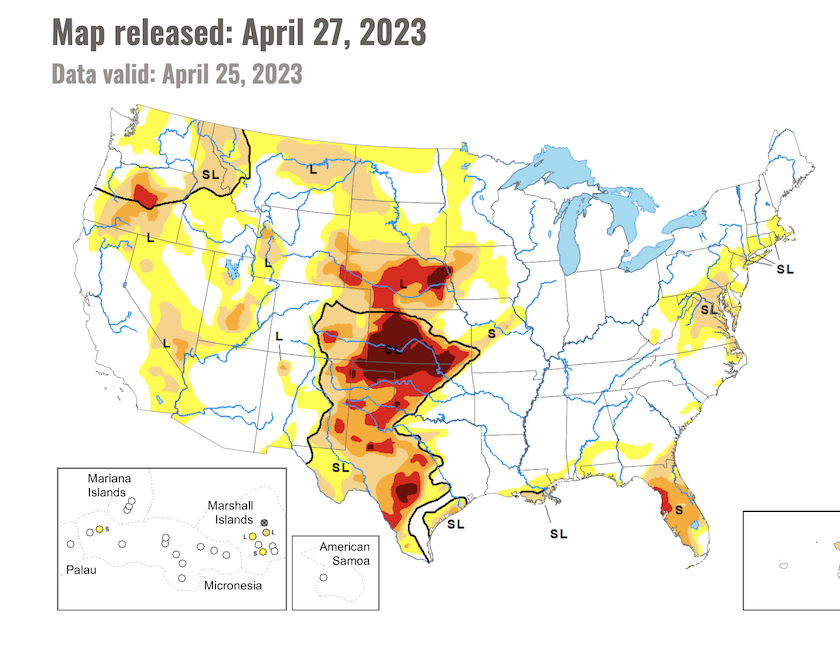Is El Niño to Thank for the Recent Rains in the Drought-Stricken Plains?

Farmers in the Southern Plains are finally starting to see some much-needed moisture hit their fields. While it may be too late to save the winter wheat, it’s a hopeful sign for farmers who needed the rain to even plant summer crops like corn and cotton. However, a USDA meteorologist says the rains can't be attributed to the onset of El Niño quite yet.
The National Weather Service (NWS) says the 30-day rainfall totals vary greatly in parts of the region. For Oklahoma, the totals include:
- Cheyenne: 1.82 inches, with 1.01 of that in the past week
- Altus: 1.01 inches
- Woodward: 2.25 inches
- Norman: 3.87 inches
Nice rain last week! 2.25 inches over three days. I’m planting milo today. Byron, OK. — Steve Clark (@CoopSteve) May 3, 2023
The rainfall hasn’t been as bountiful in Texas, with the NWS telling AgWeb most of Lubbock received a half-inch of rain or less so far this week. Lubbock also saw .03 inches of rain on April 23.
Amarillo received a little more rain in April, with the official total from the NWS at .95 inches. For May to date, Amarillo has seen .01 inches of rain, but there is another chance of rain tonight.
Is the recent rainfall a sign of change, or can we thank El Niño for the moisture that’s fallen the past couple of weeks? USDA Meteorologist Brad Rippey says the chances of an El Niño this summer are growing, but that’s not what’s bringing in the recent rains.
“We do have El Niño in the offering, but we can't say that El Niño is there yet, nor can we say that this is the cause for that,” says Rippey. “If anything, this just appears to be a storm that got a little bit off the normal storm track of being through Kansas, Oklahoma and Texas and brought some much-needed rainfall, 1 inch to 3 inches in some areas.”

Rippey points out the rainfall has been extremely spotty, so the totals vary greatly from not only town to town, but from farm to farm. The little moisture that’s fallen in the Texas Panhandle and West Texas is a welcome sign; however, it’s not near enough to eat away at the long-lasting drought.
“I'd like to have seen a little bit more widespread rain. But honestly, at this point we'll take what we can get both for winter grains and for the upcoming summer crop season. And for drought-stressed rangeland and pastures which need a lot more help than just one storm to try to bounce back from a year or more of punishing drought,” says Rippey.
7:55 pm radar update. A line of thunderstorms packing wind gusts up to 65 mph and quarter-sized hail is moving northeast through the western and southern South Plains. # lubwx #txwx pic.twitter.com/uxJWD6U8js — NWS Lubbock (@NWSLubbock) May 3, 2023
Rippey says he is still concerned about high winds and the potential for more dust storms in parts of Texas. With the drought still parked over the area, along with the ongoing chances for high winds, conditions could be ripe for potential problems.
Related Story:
As El Niño Makes Its Grand Return, Here's What It Tells Us About Summer Weather and Corn Yields







